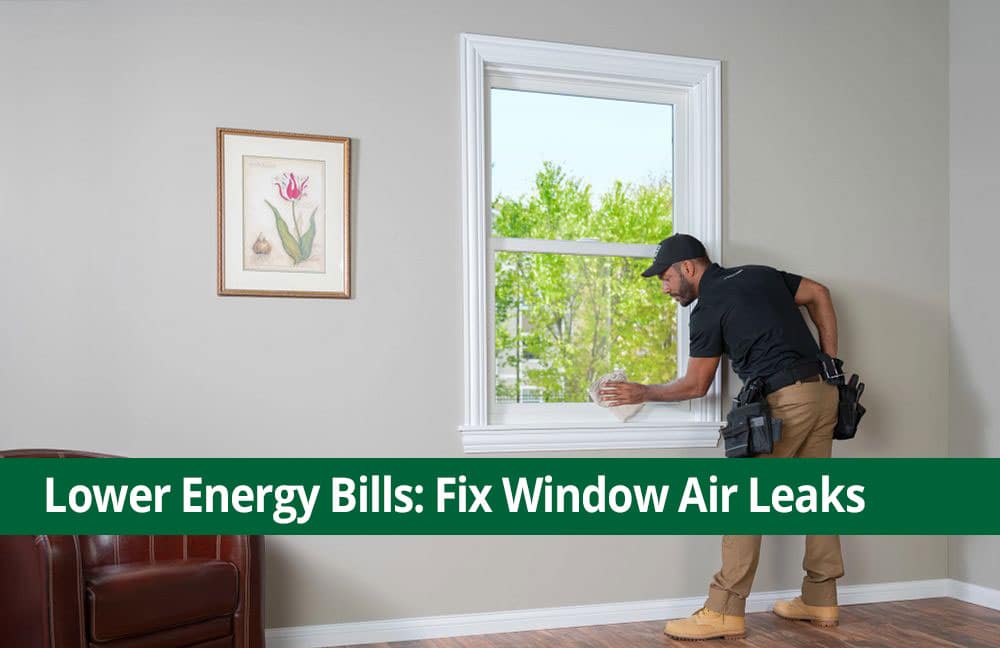

As a homeowner on Long Island, NY, you should know that window air leaks can lead to discomfort at home, increased utility costs and overall general frustration with your home. Many Long Island homes with older windows have air leaks, but there is something that can be done about this problem. Inspecting for air leaks and then performing basic repairs can help.
Homeowners with older windows often struggle with air leaks around and between the sashes of the windows. If you own an older house and have older windows, you may have noticed that upi have this problem yourself, or your windows may be secretly throwing your energy dollar out the window a little at a time. Knowing how to inspect for air leaks around your windows and then performing basic maintenance can help keep these problems at bay and lower your energy bills year-round.
Some air leaks can be seen just by performing a visual inspection. Walk around your windows from the outside and inside the house. Look for seams that are uncaulked and cracks through which light shines. If you can, do this when there’s a marked difference in the light inside and out. For example, check from outside when it’s dark enough that you have lights on inside and check from inside when it’s light out, but the sun is not shining directly on your windows.
You can also check for drafts with your hand, particularly during extreme temperature changes. If it’s very hot outside and you have the air conditioning running inside, you may be able to feel the hot air coming in. The same holds true in the winter with cold air and heated spaces. Either way, it helps when there’s a little wind outside.
Hold a lit candle up to your window (ensure that your curtains are well tied back and keep the flame away from any flammable material). Move the candle slowly around the perimeter of the window and anywhere two sashes meet, like in the middle of a double hung or sliding window. Be sure to keep your movements slow and steady so you don’t introduce your own drafts to the flame. If the flame flickers when you’re not moving it, you may have found an air leak allowing outside air in and your expensive conditioned air out.
You can also ask a friend or family member to hold up a hair dryer on the other side of the window from where you are (inside or out). Ask them direct the air around the perimeter of the window and where the sashes meet and note where you feel the air coming in (or out).
If a Do It Yourself inspection isn’t working for you, you might consider hiring a home energy auditor to inspect your home and point out leaks and other inefficiencies. These professionals are trained to find ways that homeowners can improve their home’s energy efficiency. Your home energy auditor will likely look at other areas of your house, like the attic, furnace, etc. , not just your windows and give you a full report on just how efficient, or inefficient your home is.
Once you find the leaks, it’s time to do something about them and stop wasting your hard earned money on high heating and cooling bills. Fortunately, there are a few inexpensive and not overly difficult ways to reduce the gaps that are causing air leaks in your windows.
Most windows have some kind of weatherstripping to help block air transfer along the moving parts of your windows. Over time, this weatherstripping can wear out from repeated opening and closing of the window. Weatherstripping comes in the form of rubber or foam and is sold in strips to fill the spaces between windows and their frames.
You can purchase weatherstripping at most local home improvement or hardware stores. Be sure to inspect your windows to see what kind of weatherstripping your windows have and how you might be able to replace it or retro-fit it to work with your particular window. Weatherstripping should not prevent you from properly opening or closing your windows, so measure the spaces carefully before buying weatherstripping for your windows.
Like weatherstripping, caulking can also fill gaps around windows and prevent drafts. Caulking is often installed on the home’s exterior as well as interior. Unlike weatherstripping, calking is applied to the non-moving parts of the window, like around the window frame and where it meets other surfaces, like walls. Inspect all caulking around your home’s windows and remove and replace old caulking as it begins to deteriorate. Remove cracked or deteriorated caulking with a caulk removal tool before installing new caulking.
Broken windows can also cause air leaks. You’ll likely have to hire a professional to repair any broken windows in your home, especially if they are insulated glass windows that need to be special ordered. If you have single pane windows and are pretty handy around the home, you may be able to replace broken window glass yourself. Just be careful as even new window glass can be very very sharp around the edges. And certainly the broken glass is going to be very sharp. Be sure to wear thick protective gloves if you are going to attempt this yourself.
If your windows utilize inefficient single pane glass or they are beyond repair, it might be time to replace them. Replacement windows from Renewal by Andersen of Long Island are designed to be energy efficient and won’t leak air or water! If this interests you, contact Renewal by Andersen of Long Island today at (866) 609-5033 or fill out the short form on this page for a free window consultation.

Learn Everything You Need to Know BEFORE Buying Replacement WindowsClick Here to Download Now!